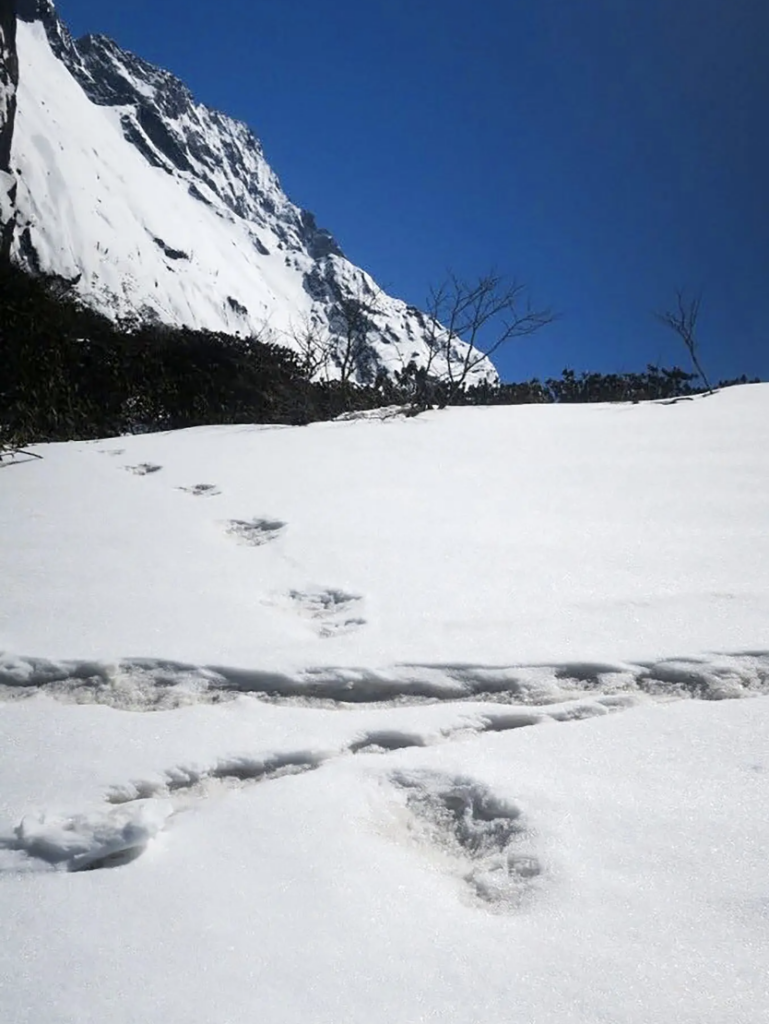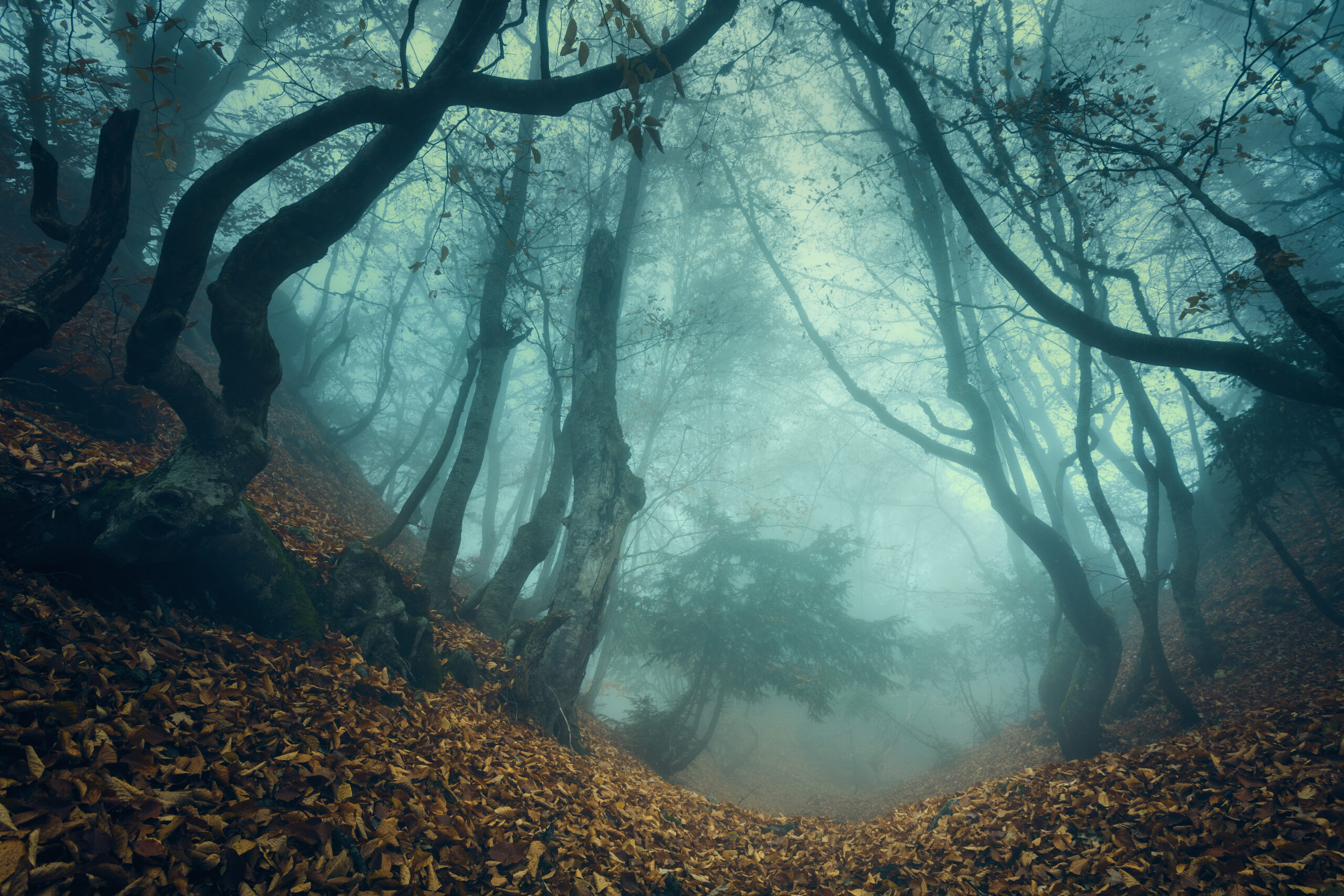For centuries, people all over the world have reported sightings and encounters with a mysterious, ape-like creature known as Bigfoot.
These encounters have ranged from fleeting glimpses of a large, hairy figure in the distance to up-close encounters with a creature that seems to possess human-like intelligence.
In this blog post, we’ll take a look at some of the most well-known and intriguing Bigfoot sightings and encounters in the U.S. and around the globe.
The Wild Man of the Navidad (Texas, 1837-1884)
The Wild Man of the Navidad was first widely reported in the early settlements along the Navidad River bottoms, in the modern-day town of Sublime, Texas, in Lavaca County.
According to legend, the creature was known as “The Thing that Comes” by the slaves living in the area, as it was never actually seen, but there was always evidence that something had come and gone.
On moonlit nights, starting in 1836, people would find that food was missing from their cabins, even though an intruder would have had to step over sleeping dogs to reach it.
Families even stopped fattening hogs, as a fat hog would inevitably be replaced by a scrawny one.
While valuables such as watches or money were never taken, tools would sometimes disappear only to reappear later, beautifully polished.
Searchers would occasionally find a camp set up by the creature, but “The Thing” never returned while they waited.
The creature was most often described as being covered in short brown hair and very nimble, which allowed it to elude capture for many years.
The Rev. Samuel C.A. Rogers, a circuit-riding minister in the area, first saw a total of three footprints in the spring of 1845 and continued to spot them for several years before all but the largest disappeared.
Although some believe the creature survived for many years, Rogers wrote that in 1850, the largest hunt for the Wild Man was organized, and the hunters did manage to trap a man in a tree, surrounded by baying dogs, horses, and men with guns.
This is where the legend diverges into varying versions, the most common being that the captured man was actually a solitary African who wore no clothes and spoke no English.
In 1851, a sailor who spoke the man’s African dialect reportedly came traveling through the area.
It turned out that the “wild man” was actually a prince who had been sold into slavery as a child.
After reaching Texas, he and a companion had escaped, but the companion had died from exposure after a few years.
The Texas State Gazette published a runaway slave capture notice from June 24 to August 12, 1854, for “an AFRICAN well known as the Wild Woman of the Navidad, supposed to belong to Beckford, late of Virginia” that was taken up in Lavaca County.
It’s said that the Wild Man of the Navidad was eventually sold into slavery in Victoria, Texas, and lived in Refugio and Victoria Counties until his death in 1884.
A collection of these early accounts were later published in their entirety in J. Frank Dobie’s book “Tales of Old-Time Texas” in 1928.
Despite the varying accounts of the Wild Man of the Navidad, one thing remains clear: this was the first widely-reported Bigfoot encounter in the United States.
The legend has continued to captivate and intrigue people for centuries, and it serves as an important part of the history of Bigfoot and the many encounters that have been reported since.
Whether you believe in the existence of Bigfoot or not, it’s hard to deny that the legend of the Wild Man of the Navidad is an intriguing and mysterious part of American folklore.
So, the Wild Man of the Navidad will always be remembered as the first Bigfoot encounter in the United States.
The Bigfoot of Bluff Creek (California, 1958)
The Patterson-Gimlin film, also known as the Bigfoot of Bluff Creek, is perhaps one of the most famous pieces of evidence for the existence of Bigfoot.
In 1958, Roger Patterson and Robert Gimlin were horseback riding near Bluff Creek, California when they stumbled upon a large, ape-like creature walking on two legs.
Patterson quickly grabbed his camera and filmed the creature as it walked away from them.
The film, which lasts for about a minute, shows a large, bipedal creature with long, shaggy hair and a stooped posture.
The film quickly gained attention and sparked debate among Bigfoot enthusiasts and skeptics.
Some believe that the footage is genuine and proves the existence of Bigfoot, while others argue that it is a hoax or a misidentification of a known animal.
Despite the controversy, the Patterson-Gimlin film remains one of the most well-known and widely debated pieces of evidence for the existence of Bigfoot.
It has been studied by researchers and analyzed by experts, and it continues to fascinate people all over the world.
The Bigfoot of Point Pleasant – Mothman (West Virginia, 1966)
The town of Point Pleasant, West Virginia was the site of a series of strange sightings and encounters with a mysterious, humanoid creature known as Mothman in 1966.
The first reported encounter occurred on November 15, 1966, when Roger and Linda Scarberry and Steve and Mary Mallette were driving near the abandoned National Guard Armory and power plant.
In the headlights, they saw a menacing figure standing six to seven feet tall with glowing red eyes. The creature followed their car as they fled, even as they reached speeds of 100 mph, and seemed to rise up like a helicopter.
After this initial encounter, Mothman was reportedly responsible for a host of strange events in the area, including lurking outside homes, chasing cars, and stealing pet dogs.
One such incident occurred the day before the Scarberrys’ encounter, when Newell Partridge of Salem, West Virginia reported that his German shepherd disappeared after encountering two glowing red circles in the woods.
Journalist Mary Hyre of the Athens Ohio Messenger covered the strange occurrences and worked with New York paranormal journalist John Keel on his book, “The Mothman Prophecies,” which documented the events in Point Pleasant.
The book and the subsequent 2002 film starring Richard Gere brought Mothman and the West Virginia town to national attention.
However, Mothman was not seen in Point Pleasant after the collapse of the Silver Bridge in December 1967, which some people connected to an alleged sighting of the creature just before the collapse.
Despite this, Mothman has resurfaced in recent years, with sightings reported in Chicago in 2019 and in West Virginia in 2020.
The Skookum Cast (Washington, 2000)
The Skookum Cast is a Bigfoot encounter that took place in the Gifford Pinchot National Forest in Washington state in 2000.
The incident involved a group of Bigfoot researchers and enthusiasts, who were conducting an expedition in the forest in search of evidence of the legendary creature.
During the expedition, the group set up a series of audio recording devices in the hopes of capturing any sounds or vocalizations made by Bigfoot.
On the second night of the expedition, the group heard strange noises coming from the direction of their audio recording devices.
When they went to investigate, they found that the devices had been moved and tampered with.
The group was able to retrieve one of the devices, which contained a recording of a series of strange vocalizations that they believed to be made by a Bigfoot.
After analyzing the recording, the group concluded that it was a clear example of Bigfoot vocalizations, and they dubbed the creature the “Skookum.”
The incident became known as the Skookum Cast and is considered one of the most well-documented Bigfoot encounters in history.
The recording has been analyzed by experts and has been used as evidence in the ongoing debate about the existence of Bigfoot.
The Sierra Sounds (California, 1971)
The Sierra Sounds are a series of audio recordings that were made in the Sierra Nevada mountain range in California in the 1970s.
These recordings claim to capture the vocalizations of Bigfoot creatures, and have sparked widespread interest and debate among researchers and enthusiasts.
Some people believe that the Sierra Sounds are genuine evidence of Bigfoot, and point to the unique and distinct sounds captured on the recordings as evidence of the creatures’ existence.
These sounds include a variety of guttural noises, vocalizations, and even what some believe to be language.
However, not everyone is convinced that the Sierra Sounds are genuine.
Some people argue that the sounds could have been created by humans as a hoax, or that they could be the result of misidentified natural sounds.
Despite the debate, the Sierra Sounds continue to be a popular topic of discussion among Bigfoot researchers and enthusiasts.
Many people believe that they offer valuable insights into the behavior and communication patterns of Bigfoot, and are eager to analyze and study the recordings in more depth.
The Sightings in British Columbia (Canada, 2014)
In 2018, a man in British Columbia filmed a potential Bigfoot while hiking in the Tantalus Range near Squamish.
The footage shows a black dot appearing to move up a snow-covered mountain, prompting speculation that it could be the legendary creature.
Some have suggested that the figure is actually a bear standing upright on the slope.
The video has gained significant attention on YouTube since it was uploaded.
The Evidence in the Himalayas (Nepal, 2019)

An Indian Army mountaineering team discovered 32-inch footprints in the snow near the Makalu Base Camp in Nepal.
The discovery sparked speculation that the footprints could be from a yeti, a mysterious, ape-like creature similar to Bigfoot that is part of folklore in several cultures.
However, according to Daniel C. Taylor, author of “Yeti: The Ecology of a Mystery,” the most likely explanation for the footprints is that they were made by a mother bear and her cub, with the cub hopping behind the mother and creating an overprint that appears to be 32 inches long.
Taylor also identified three types of yetis: the legend, the inner yeti that represents a desire to be closer to nature, and the physical yeti that actually made the footprints.
Final Thoughts
In conclusion, Bigfoot, also known as Sasquatch, is a mysterious and elusive creature that has captivated the imaginations of people all over the world.
From the Wild Man of the Navidad in Texas, to the Patterson-Gimlin film in California, to the sightings in Point Pleasant, West Virginia and British Columbia, Canada, Bigfoot has been the subject of countless sightings and encounters.
While there is still much that is unknown about this mysterious creature, one thing is certain: the fascination with Bigfoot will continue for years to come, as people around the world continue to search for evidence of its existence.

